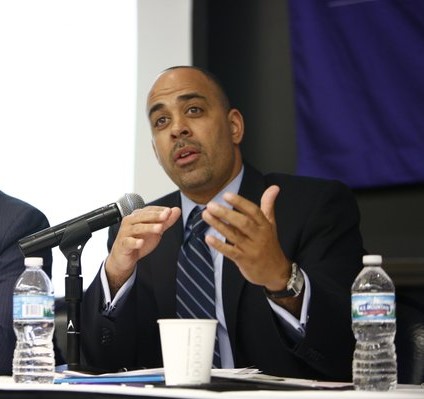 Our success has been unquestionable. There has been a steep decline in youth incarceration in America and there has even been some progress moving juvenile justice systems away from being punitive and deficit-based and toward positive youth development. Much credit is due to youth justice reform advocates.
Our success has been unquestionable. There has been a steep decline in youth incarceration in America and there has even been some progress moving juvenile justice systems away from being punitive and deficit-based and toward positive youth development. Much credit is due to youth justice reform advocates.
According to the U.S. Department of Justice’s annual count of juvenile facility populations, there has been a 40 percent reduction in youth incarceration in the U.S. in the past 10 years.
In California, the state that once had the largest number of youth locked up, the reductions have been most dramatic. In 1996, there were more than 10,000 youth in the state’s juvenile prisons — today there are less than 700. A more than 90 percent decline.
And all the youth were not just transferred to county lock-ups. A 2015 report by Commonweal revealed that the total population of youth detained in all county facilities across the state is at only half their combined capacity.
And while youth incarceration rates have fallen, so has youth crime. A report by the Center on Juvenile and Criminal Justice found that juvenile crime in California is at an all-time low, with less youth crime today than since statistics were first collected in the 1950s.
The recent passage of Proposition 57, approved by California voters in November 2016, was a huge victory for a statewide coalition of justice advocates. The law ends the detrimental practice of prosecutors determining which children are charged and incarcerated in the adult system.
These are all reasons to celebrate. But while we acknowledge the progress that has been made, we must recognize how much further we have to go. On any given day, there are nearly 70,000 youth incarcerated in the United States — six times the rate of England.
Numerous recent studies have shown that youth incarceration is not just ineffective, but incredibly harmful. And it is excessively expensive. A report by the Justice Policy Institute, which examined youth correctional facilities across the country, concluded that the average annual cost to incarcerate a youth in America is nearly $150,000.
As the number of youth incarcerated throughout the country declines, the massive amount of money being saved should be reinvested into the very communities that have had the high percentage of juvenile delinquency, which of course are the same communities with high rates of poverty and poor-performing schools.
Though juvenile crime remains low, as overall crime has begun to creep up in some cities, reinvesting youth incarceration spending into youth development, family support and community revitalization will help continue to drive youth delinquency down and high school graduation rates up.
While we reinvest the savings of a smaller system into the community, we must also continue to improve juvenile justice in America. An ideal youth justice system would be based on positive youth development (PYD), a strength- and asset-based youth development process. The system should no longer ask what is wrong with this youth, how do we fix him or what did he do wrong, how do we punish him. We must assess youth’s strengths and build upon them, while also addressing their needs.
Building on young people’s strengths and providing them with services, supports and opportunities is contrary to how the juvenile justice system has been operating for decades. Most juvenile justice agencies continue to operate in a deficit-based correctional system, where youth are seen as problems to be fixed or punished.
But there are some emerging practices to highlight.
Washington, D.C.’s Department of Youth Rehabilitation Services (DYRS) develops and updates the case plans of all youth committed to the juvenile justice agency through a youth and family team meeting. After developing case plans with the youth and families involved, the plan is resourced through a network of community service providers.
In 2011, the New York City Department of Probation launched the innovative Neighborhood Opportunity Networks to provide people on probation with a connection to services and supports in the neighborhoods they live in. These client-centered resource hubs have become a national model of how to transform probation practice.
Wayne County, Michigan decided to stop sending youth to the state system and launched a coalition of community service providers that would assume the responsibilities of supervision and services for adjudicated youth. In an overview of its reforms, Wayne County’s juvenile justice system summarizes the essence of positive youth development, stating that their “new model’s commitment was to treat each individual youth as a person (within a family context) in need of opportunities and resources rather than a societal disease that needed to be contained.”
The movement to reform the youth justice system has made tremendous progress. It’s cause for celebration. But then let’s get back to work and achieve even greater success to improve the outcomes of system-involved youth.
David Muhammad is the executive director of the National Institute for Criminal Justice Reform. He is the former chief probation officer of Alameda County in California and the former deputy commission of probation in New York City.